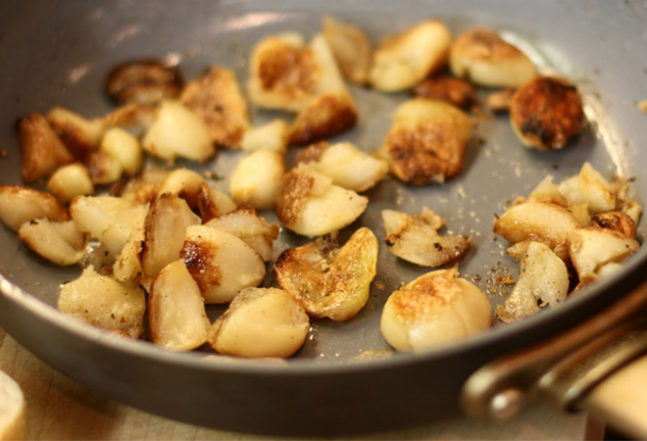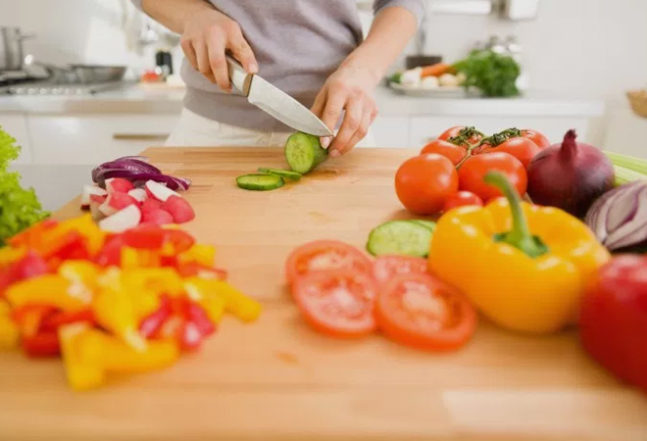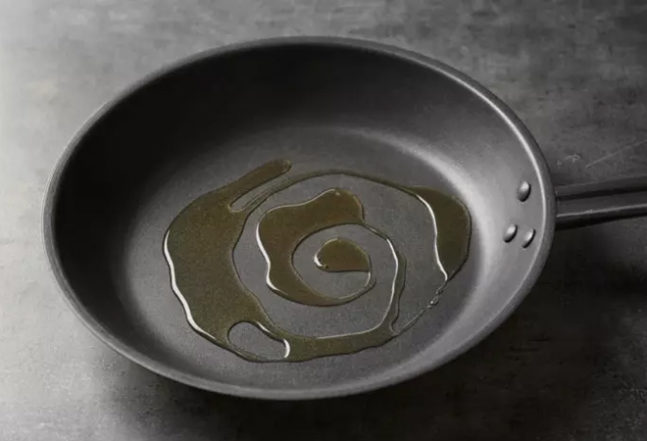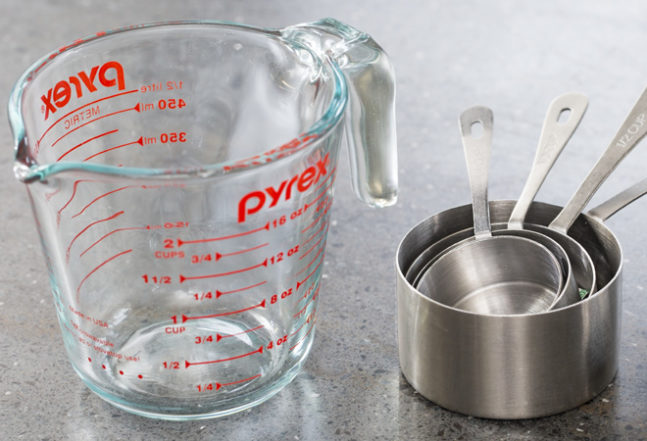Learning how to cook is one of the most enriching things a man can do in his spare time. Learning how to cook teaches you about timing and patience, and it allows you the freedom to explore your tastes and preferences. But the learning curve to becoming an at-home culinary wonder is steep, and for some, proves too difficult a mountain to scale. Well, we think that’s poppycock. Failure is a word we don’t know, and you shouldn’t know it, either. That’s exactly why we put our list of the Cooking Mistakes Most Home Cooks Make together—because people who learn from their mistakes are smart, but people who learn from the mistakes of others are smarter. Read this list and your home cooking will improve overnight.

Treating Salt as a Seasoning
Many new cooks don’t really understand the power of salt. They believe it’s simply another common seasoning that makes things taste, well, salty. The truth, however, is that salt is used as a flavor enhancer. It’s why the best chocolate ice cream is topped with a sprinkle or two of the stuff. Hell, ever hear of salted caramel? Salt will actually help draw out or suppress flavors—sweet, sour, bitter, umami—that could use a little push or pull in the right direction. Learning to see salt in that way, and then consciously using it in your dishes to achieve ideal flavor, will improve your cooking ten-fold.
Not Timing Things Properly
Timing is real tough to get down, especially for larger, multiple-course meals (Like Thanksgiving, for instance). Learning how to time things out and multi-task so that your entrée is finishing up with the sides and hors d’oeuvres, or so that dessert is finished and ready for final prep just as your guests are being seated, can mean the difference between an okay meal and something truly, truly spectacular. Having an idea of when to start or check on what items will make things a lot easier for you in the long run. Plan it out.

Overcooking Garlic
We’re unabashed garlic guys. Like, even if the recipe doesn’t call for garlic, we’re likely to add some in just for good measure. The problem, however, is that so many people wind up burning their garlic without realizing what they’re doing. For instance, if you’re working with a recipe that require sautéing garlic and onion in a pan, you’re destined for failure if you add them in together. Onion is a denser, moister vegetable that can take a couple minutes to sauté through. Garlic, however, cooks lightning fast—in fact, most people agree that garlic’s ideal cook time is roughly only 30 seconds. And another quick pro-tip: If your garlic starts browning, you better move quickly, because you’re only another 30 seconds away from burnt. Keep it quick and over medium heat, and remember: It’s done when you can smell it!

Cutting Veggies at All Different Sizes
There are few things in all of cooking that are more agonizing than when someone decides to go all Yippee-Ki-Yay on the cutting board. Don’t randomly slice-and-dice your veggies. Let’s say you’re cooking a potato and a French fry. Surely, you wouldn’t put them in the oven/fryer at the same time, right? Cutting them into equal-sized pieces ensures a more even cook time, which can mean all the difference between lumpy, starchy, undercooked potatoes and crispy homefries—equal cuts means equal cooks.

Not Using Acid
Another common mistake at-home cooks make is they wind up over-salting a dish because they found it was still too flat, even after all the other seasonings were mixed in. A classic pro-tip is, if you’ve already seasoned it enough and it still seems like it’s missing something, an acid—a squeeze of lemon juice, a little red wine vinegar, etc.—could be just what the doctor ordered.
Thinking Cooking Ends When the Burner Goes Off
This is one of those common sense rules that some at-home cooks tend to forget about. Whether you’re cooking eggs in the frying pan or steak on the grill, it’s important to understand what residual heat is, and what it means for your food. Also called “carry-over cooking,” residual cooking occurs when your dish continues cooking after being removed from the heat source. Once that heat source is suddenly removed, it doesn’t mean the heat that built up over all that time just goes away. Your steak can cook for up to 10 minutes after you pull it off the grill. A roast can continue cooking for up to 30 minutes after it’s pulled. Hell, if you’re Gordon Ramsay cooking a Christmas turkey, you let your bird rest for a whole 2.5 hours after you take it out of the oven. The point is, learn residual heat, and learn how it’s going to affect the meat you’re cooking.

Overcrowding Your Pan
Cooking is a labor of love. Good cooks understand that preparing a good meal takes time and effort, and that cutting corners and taking shortcuts is, quite literally, a recipe for disaster. Overcrowding your pan is a perfect example. So much of the food you’re cooking—whether you’re trying to sear in a skillet or sauté in a saucepan—is going to depend heavily on available surface area. Crowding a pan risks uneven cooking, sogginess, and even ruining the whole meal. A good rule is to leave one inch of space between everything in your pan, or roughly half of the surface area open.

Treating Olive Oil as the Only Oil
Listen… We’re not saying you should never cook with olive oil. For some foods, olive oil is great because it adds delicious flavor, in vinaigrette, as a drizzle, etc. Regular olive oil can be used in high-heat cooking, but again, it really all depends on what you’re using it for. If you’re trying things like chicken or turkey, we recommend peanut or canola oil. If you’re baking, we recommend vegetable oil. Look at the different smoking points of various oils and study up on which one makes sense for the dish you’re cooking.

Not Salting Pasta Water
We honestly don’t understand why so many people think this is some kind of myth, but always, always salt your pasta while it boils. The whole of your dish is only equal to the sum of its parts—literally and figuratively speaking. Pasta isn’t meant to be bland and tasteless. No matter how good the stuff you put over the pasta, the dish will lack if the pasta isn’t salted.
That said, how much salt is too much salt? Well, it’s tough to say. Every dish is different, as are everyone’s preferences. Generally speaking, for every gallon of water, you want four teaspoons of kosher salt.

Using Dry and Wet Measuring Cups Interchangeably
It’s technically true that both liquid and solid measuring cups measure the same volume. However, eyeing up solids in a liquid measuring cup will almost always ensure an inaccurate read, because by their very construction, solid measuring cups are made to be filled to the brim, and then have the excess ingredients scraped off the top using a leveler. Trying to do that with a liquid will obviously lead to a bunch of spill over and a giant mess. And, vice versa, because measuring dry ingredients usually means that they should be packed, which you can’t do when pouring them into a liquid cup.
When every drop or scoop counts, always use the appropriate measuring tools.




